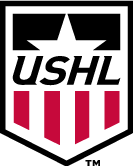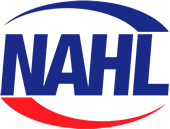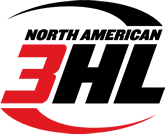Junior Hockey in the U.S.
Junior Hockey in the United States. Defining the landscape.
The following information is made available in the USA Hockey Annual Guide. For more information, please go to www.usahockey.com.
Junior Hockey Program and Philosophy
The goals of junior hockey are to promote, develop, and administer the domestic USA Hockey program for junior-aged players, teams, and leagues. USA Hockey's Junior Program is available to athletes who are at least 16 years of age and no older than 20 as of the 31st day of December of the current season of competition (provided that, pursuant to USA Hockey Rules & Regulations, Section XI: Junior Hockey, Subsection C, Junior Age Players and Citizenship, players that are 15 years of age on or before December 31st of the current season may be permitted to play Junior Hockey upon submission and approval of a petition).
The program is available to high school students and graduates who seek a greater or different challenge than that which might be available through their prep school team, high school varsity or club team, or area 18 & under teams. The principal purpose of this development program is to prepare the athlete for career advancement either in a collegiate program or a professional opportunity.
Junior Hockey Purpose & Goals
The purpose of Junior hockey is essentially two-fold:
- Provide an opportunity for players in this age group to play organized hockey
- Development of the skills and abilities of all the participants, including players, coaches, and officials.
The goals of Junior hockey are as follows:
- Skill Development. To provide talented young players with the opportunity to develop in an organized, structured, competitive and supervised environment.
- Quality Coaching. To provide considerable training time, quality coaching instruction, and concerned oversight.
- Social Maturity. To provide players with a healthy, constructive environment in which to develop socially.
- Educational Advancement To provide assistance and opportunities for the accomplishment of the participant's educational goals.
- Recruiting Exposure. To provide players with exposure to collegiate and professional scouts and recruiters.
- Advanced Competition. To provide players with exposure to national and international competition.
- Protection of Amateur Status. To protect, most importantly, the amateur status of all participants under the rules and guidelines established by the International Ice Hockey Federation, USA Hockey, Hockey Canada, the NCAA, the NAIA, and the National Federation of High Schools.
Junior Hockey Classifications
USA Hockey supports and promotes the Ladder of Development in junior hockey, providing for developmental advancement opportunities based upon skill level. All leagues and teams are certified, annually, by the USA Hockey Junior Council in three (3) classifications: Tier I; Tier II; Tier III; and provisional for any of the foregoing classifications.
Tier 1
The Tier I program is a player development concept designed to become the best amateur hockey league in the world which will attract the top 16-20 year-old players and further develop its players, coaches, and officials through the highest level of competition. This will be accomplished by fan support and a market-driven ownership of leagues and teams with sound financial backing committed to its mission, and fans in conjunction with the USA Hockey National Team Development Program and USA Hockey support.
Goals of Tier 1:
- maintain the eligibility of all athletes for NCAA competition;
- offer quality academic development;
- allow players to achieve maximum skill development at the highest competitive level of junior hockey;
- broaden the base of development in coordination with USA Hockey's National Team Development Program.
Strategies of Tier 1:
- attract the best players, coaches, and officials in the United States;
- attract solid investors as team owners and operators;
- market the league, teams, players, coaches, and officials to the most aggressive degree possible while ensuring that all future development and movement options (NCAA included) remain open and available;
- manage the business from a profit-driven perspective in order to invest back into the league;
- strengthen relationships in the hockey community by promoting the league as the vehicle to do so;
- become the most successful junior hockey league in the world;
- focus on a national presence.
Key Differentiating Factors of Tier 1:
- Free Tuition. All training, coaching, and developmental services are covered by the team and the league.
- Free Equipment. Equipment costs covered by team through a partnership with an equipment manufacturer. Each player has access to skates, sticks, protective equipment, and training apparel at no cost.
- Free Housing. Housing costs covered by team through a network of billet homes in the local community. Each player is afforded their own private sleeping area, meals, laundry, and other family services.
- Free Travel. All Tier 1 teams are required to provide motorcoach ground transportation, hotel rooms, and meals for away games when applicable (some away games are local).
There is one league certified by USA Hockey for competition at the Tier I Level:
-

United States Hockey League (USHL)
Commissioner: Glenn Hefferan
850 West Jackson Boulevard, Suite 703
Chicago, IL 60607
Phone: (312) 546-7300, Fax: (312) 546-7330
Email: ushl@ushl.com
Website: www.ushl.com
Tier 2
The Tier II league and teams provide a competitive opportunity for the elite player on a nationwide basis. The Tier II model features teams located in fan-driven markets operated by owners with sound financial backing. Their role in the development of players, coaches, and officials involved is clearly defined.
Goals of Tier 2:
- maintain the eligibility of all athletes for NCAA competition;
- offer quality academic development;
- allow players to achieve maximum skill development at the second-highest competitive level of junior hockey;
Strategies of Tier 2:
- attract solid investors as franchise owners and operators;
- market the league, teams, players, coaches, and officials to the most aggressive degree possible while ensuring that all future development and movement options (NCAA included) remain open and available;
- manage the business from a profit-driven perspective in order to invest back into the league;
- strengthen relationships in the hockey community by promoting the league as the vehicle to do so;
- operate under the USA Hockey Ladder of Development
Key Differentiating Factors of Tier 2:
- Free Tuition. All training, coaching, and developmental services are covered by the team and the league.
- Equipment. All players are provided with sticks, pants, gloves, helmets, jerseys, and socks at no cost.
- Free Travel. All teams are required to provide motorcoach ground transportation and hotel rooms for away games when applicable.
- Housing Stipend. Housing costs are supplemented through team relationships with a network of billet homes in the local community.
There is one league certified by USA Hockey for competition at the Tier II level.
-

North American Hockey League (NAHL)
Commissioner: Mark Frankenfeld
5151 Belt Line Rd., Suite 875
Dallas, TX 75254
Phone: (469) 252-3800, Fax: (214) 975-2250
Email:nahl@nahl.com
Website: www.nahl.com
Tier 3
The Tier III leagues and teams provide a competitive opportunity for the elite player on a regional and localized geographic basis. There are currently eight leagues certified by USA Hockey for competition at the Tier III level. All other teams/leagues not classified as Tier I, Tier II or Tier III, but included within the Junior age group, are classified as Tier III independent teams. Members include independent teams not associated with certified leagues.
Contact information for each of USA Hockey's Tier III certified junior leagues is below:
-

North American 3 Hockey League (NA3HL)
5151 Belt Line Rd. #877
Dallas, TX 75254
Phone: (469) 252-3800, Fax: (214) 975-2250
Email: na3hl@na3hl.com
Website: www.na3hl.com

































